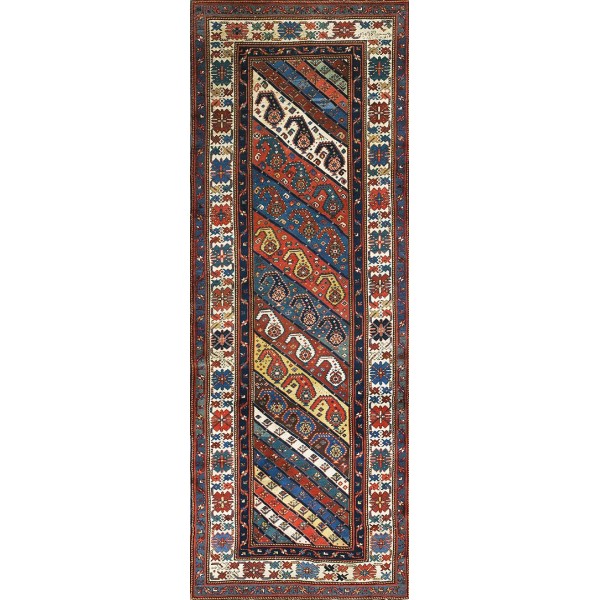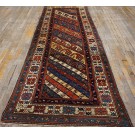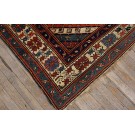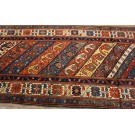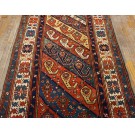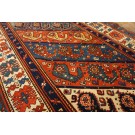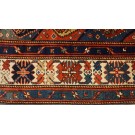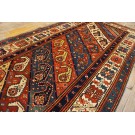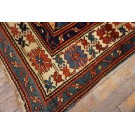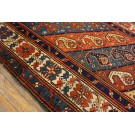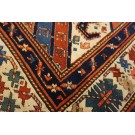Mid 19th Century Caucasian Shirvan Carpet Dated & Inscribed
Dated 1277 HQ / Corresponding to 1860
Inscribed Mr. Jabari in the year 1277
| Stock ID: | #21541 |
| General Rug Type: | Caucasian |
| Specific Rug Type: | Caucasian - Shirvan |
| Circa: | 1860 |
| Ground Color: | Multi |
| Border Color: | Ivory |
| Origin: | Caucasus |
| Material: | Wool |
| Weave: | Pile - Knotted |
| Shape: | Rectangle |
| Width: | 3' 8" ( 112 cm ) |
| Length: | 9' 8" ( 295 cm ) |
DescriptionCaucasianThis is the general heading for all rugs made in the Caucasus mountains and in the trans-Caucasus areas, north of the Arax River, and between the Black and Caspian Seas. This includes rugs from the Kazak, Karabagh, Gendje, Koghan, Talish, Akstafa, Shirvan, Baku, Kuba and hesghi districts and the variants and subtypes thereof. The rugs are usually in scatter sizes and of all wool construction, with bold colors and geometric patterns, from the 18th through 20th centuries. Prices range widely depending on rarity, color, design and condition. A strong collector market exists for the better examples. Caucasian - ShirvanThe Shirvan district of Caucasian Azerbaijan lies to the west of the Caspian sea, north of Baku. Rugs were made in huge numbers in the 19th century on composite wool and cotton foundations. There are many named subtypes among Shirvan weaves. Geometric motives fill the field, but the designs are smaller and individually less striking than those of the coarser Kazaks. Almost all rugs are scatters and runners. Dye quality varies, but the best rugs have wide, exceptional, natural dye palettes. Many Shirvans are exceptional,natural dy palettes. Many Shirvans are service rugs, but the best, for instance the Manasali prayer rugs are avidly collected and fetch extraordinary prices. | |
| Tearsheet Download | |
